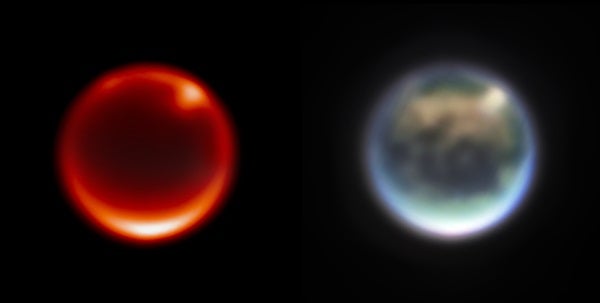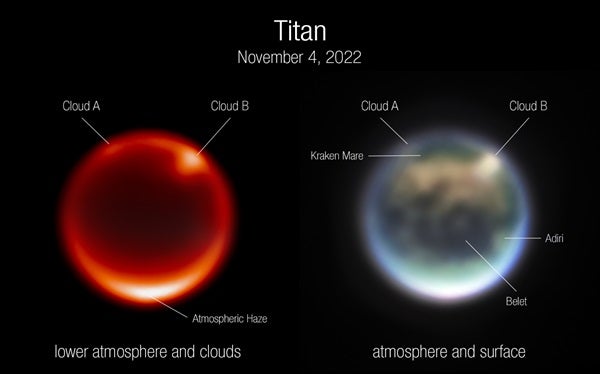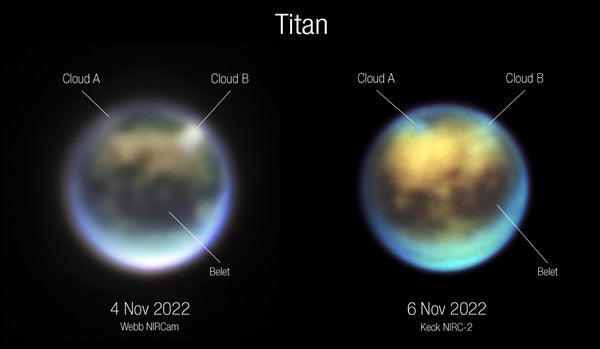NASA’s James Webb Space Telescope (JWST) has captured new images of Saturn’s largest moon, Titan. The views not only highlight surface features like the methane sea Kraken Mare and the dark sand dunes of Belet, they also reveal two large clouds shrouding parts of Titan’s northern hemisphere.
These clouds, which were later confirmed by follow-up observations from the ground-based Keck Observatory in Hawaii, are expected to form in Titan’s mid-northern hemisphere during late summertime.
Although the new research has not yet been peer-reviewed, evidence of seasonal clouds on Titan would help verify long-held predictions about Titan’s climate based on computer models. It would also add to a growing list of surprisingly complex geological and atmospheric features sported by this saturnian moon.
A new view of Titan
Titan is a very unique moon. Besides Earth, it is the only planetary body in the solar system (or beyond, for that matter) known to host active rivers, lakes, and seas. However, unlike Earth, Titan’s liquid features are not made of water, instead composed of ultra-cooled hydrocarbons such as methane and ethane chilled to some -290 degrees Fahrenheit (-179 degrees Celsius).
The moon’s hazy, ultra-dense methane atmosphere is also very compelling, as Titan hosts storms and complex weather patterns that change with the seasons.
That’s why when team member Sebastien Rodriguez of the Universite Paris Cité woke up and discovered the new JWST images were in, he immediately emailed the rest of the team, according to a NASA post. Heidi Hammel of the Association of Universities for Research in Astronomy (AURA) and Webb Solar System GTO Project Lead, responded to the chain with: “Fantastic! Love seeing the cloud and the obvious albedo markings. So looking forward to the spectra! Congrats, all!!! Thank you!”
Equipped with the Keck observation, the researchers turned to experts in atmospheric modeling to help them interpret the data, including Juan Lora of Yale University.
After reviewing the data, Lora likewise concluded they were seeing clouds, as predicted. She told the team: “Exciting indeed! I’m glad we’re seeing this, since we’ve been predicting a good bit of cloud activity for this season! We can’t be sure the clouds on November 4th and 6th are the same clouds, but they are a confirmation of seasonal weather patterns.”
The researchers are expecting further JWST observations of Titan by both its NIRCam and MIRI instruments in May or June 2023. This data will hopefully reveal more detailed clues about the complex chemical makeup of Titan’s mysteriously dense atmosphere.












